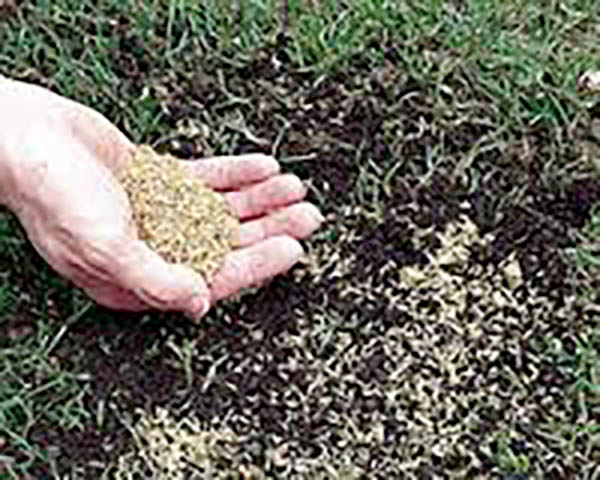
(above) Reseed lawns in autumn and apply weed control in spring.
Fall officially starts on September 21, but the autumn planting season in our area begins in early September as temperatures drop and conditions become favorable for planting.
Trees planted in the autumn have a major obstacle they must overcome. In a short period of time the ground will freeze and root development will come to a halt until next spring.
To help roots prepare for winter, trees and shrubs should be planted before October 1st, which is six to eight weeks before the ground freeze occurs in our areas. This gives the root systems time to adjust before the ground is frozen in mid-November.
When you plant take the time and give your trees every advantage you can. Research your tree to see if it has ‘special’ requirements such as soil and location.
Always make sure you break open the root ball. This will enable the roots to spread out in search of water and nutrients.
Trees planted in autumn need regular watering for the first few weeks. Newly planted shrubs struggle to get water from the ground to the tips. Watering will help your plants achieve this major function.
Mulching in autumn is also essential. While mulch is important in spring and summer to suppress weeds and control moisture, mulching in the winter keeps the ground frozen. When the ground thaws during winter warm spells, it can spark new growth which is then subject to damage when the ground refreezes. To avoid this problem plants are best mulched when the ground is first frozen in early winter.*
Conifers (evergreens) can be damaged by winter winds, snow and sun. Good planting practices will help these landscape plants survive the brutal months ahead.
You can help protect young evergreens by spraying them with an ‘anti-transpirant’ for extra protection from moisture loss and winter kill.
*Winter mulching is a good practice for spring flowering bulbs to stop them from breaking the ground early.
Happy Autumn,
James

(above) President of The Rahway Garden Club, James Keane has been researching and answering garden questions since 1995. Visit ‘Keane Gardener’ blog at: keanegardener.blogspot.com
